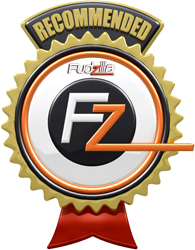Index


Review: Silent power
KFA2 gained a lot of overclocking experience with the GTX 780 Hall of Fame (HOF), which we had a chance to check out a few months ago. The original GTX 780 HOF was based on the GK110 (GK110-300-A1) and KFA2 applied the lessons learned back than to its latest Hall of Fame card, the GTX 780 Ti HOF which is based on GK110 (GK110-425-B1).
We previewed the new card last week and we were impressed in more than one level. The design is quite nice and since it has a massive cooler it is quiet. The GTX 780 Ti HOF comes with a substantial factory overclock. KFA2 bumped up the base clock from 875MHz to 1020MHz, while the Boost clock stands at 1085MHz, up from 928MHz on Nvidia's reference design.
When we first tested the reference GTX 780 Ti we quickly realized that even its stock cooler offers exceptional performance. The stock cooler can deal with reference clocks or even a slight overclock, but the KFA2 card comes with a high factory overclock and it needs something a bit better. Note that the reference cooler can also handle a 145MHz overclock, but you have to trade silence for performance to get there. With a good custom cooler you don't - and KFA2 has a very promising custom cooler. 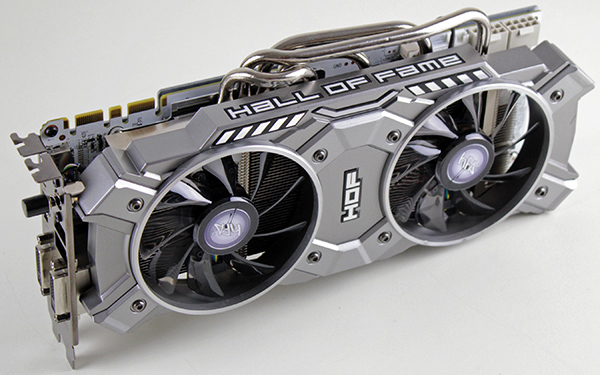
Some gamers like overdesigned gear, including coolers and shrouds. The HOF does not disappoint in the aesthetic department. The cooler looks mean, almost steampunkish and the white PCB is a nice touch, too. We're not at a beauty pageant though - all we want to know is how it handles the 145MHz factory overclock.
The next picture shows the KFA2 GTX 780 Ti which is just loosely based on the reference design.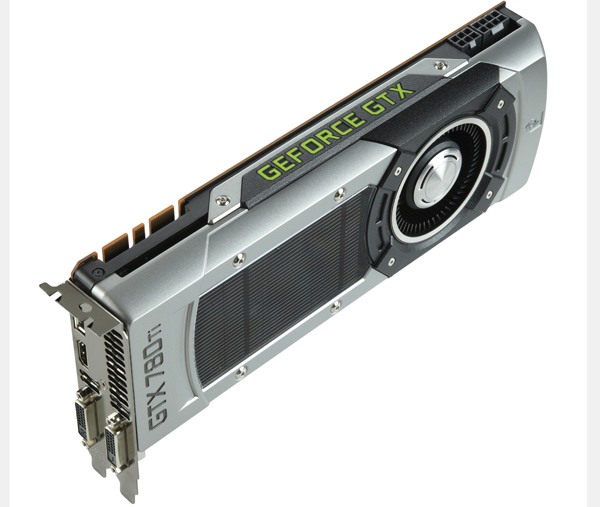
Before we proceed to the actual results let’s refresh our memory. Nvidia launched the GK110 in May as the Geforce GTX 780 that came with 2304 CUDA cores, 192 texture mapping units (TMUs), 48 render output units (ROPs) and 3GB of GDDR5 memory running on a 384-bit memory bus.
Specification wise the GTX 780 ended up with 50% more CUDA cores than its predecessor, the GTX 680, and this among some other things gives the GTX 780 card a significant performance boost, although the GK110 is based on the Kepler architecture, also used in the GTX 680. The GK104 chip used in the GTX 680 has 1536 CUDA cores. The memory bandwidth was increased, too, thanks to the wider 384-bit bus. The GTX 780 has a 384-bit bus while the GTX 680 is limited to a 256-bit interface, but the memory speed on both cards is 6008MHz.The frame buffer was increased from 2048MB to 3072MB of GDDR5 memory. Compared to GTX Titan ($999), the GTX 780 debuted at a more attractive price of $649.
Nvidia’s response to AMD’s Hawaii was to slash the GTX 780 price by $150 and launch the more powerful Geforce GTX 780 Ti, which also rendered the GTX Titan obsolete.
The GTX 780 Ti has 25 percent more cores than the original GTX 780. The suggested retail price for the Geforce GTX 780 Ti was set at $699. The GK110-425-B1 that powers the GTX 780 Ti has 5 graphics processing clusters, 15 streaming multiprocessors, 2880 CUDA cores, 240 TMUs, 48 ROP units, and 3GB of GDDR5 memory running on a 384 memory bus. GTX 780 Ti card comes with faster memory 7000MHz effective, compared to the 6008MHz on the GTX 780.
Although the KFA2 GTX 780 Ti Hall Of Fame comes with a hefty factory overclock which raises the GPU clock by 145MHz, the memory is still running on reference clocks, i.e. 7000MHz (effective GDDR5). This is quite common on overclocked Nvidia cards today.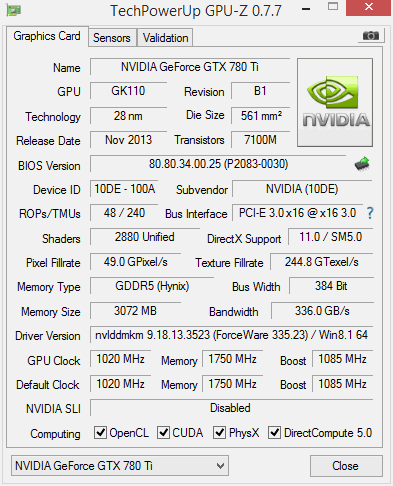
In the box you’ll find:
A User Guide and Quick Installation Guide
Driver DVD
KFA2 paper figure (some assembly is necessary)
DVI to VGA Dongle
2x 6-pin Power Adapter to 8-pin Power Adapter
Game in Progress DO NOT Disturb door sign

The Do Not Disturb sign and the paper robot are a nice touch. Here's how it looks.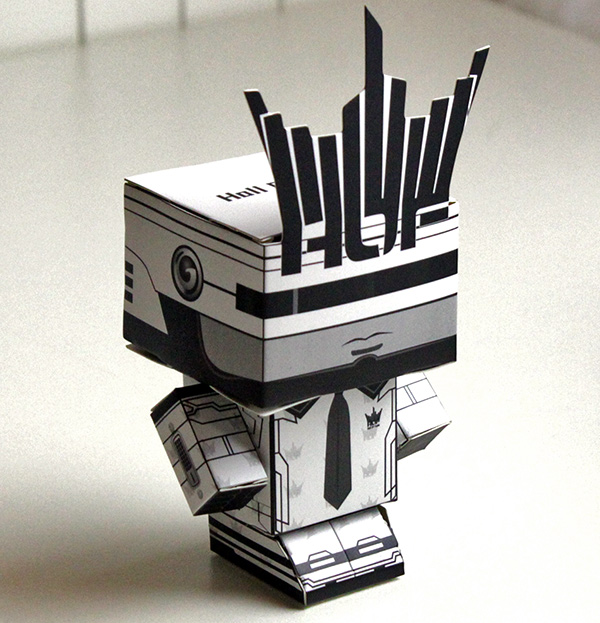
KFA2 is constantly working to improve its custom components and come up with cards capable of trumping the competition. The KFA2 GTX 780 Ti Hall Of Fame (HOF) is based on an altered GTX 780 Ti PCB design and of course it boasts a custom cooler on top.
Like Gainward and some other Nvidia partners, KFA2 chose to go with a triple-slot cooler. Since the cooler takes up a lot of room, it is not practical for three-way SLI rigs. Asus and EVGA used a different approach. Their coolers are oversized, too, but they are still dual-slot. We won't go into the finer points of their approach, but it must be noted that for the vast majority of users this will be a non-issue. Even a single GTX 780 Ti is fast enough for most gamers out there. Motherboard makers have also started producing boards with a bigger gap between the PCIe slots, allowing the use of triple-slot cards in SLI/Crossfire.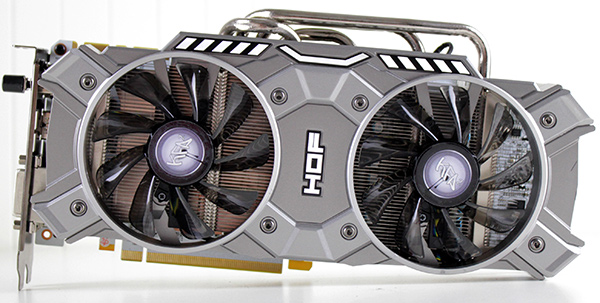
Previous generations of Geforce reference designs featured relatively noisy coolers, thus making non-reference cards with custom cooling much more appealing. However, the reference GTX 780 Ti cooler is pretty good, as it doesn’t trade noise fir performance, at least not until you overclock the card. Since an overclocked GPU generates more heat the reference cooler starts to reach its limit and the fan noise goes up. Nvidia says the thermal design for the reference GTX 780 Ti is 250W, however, due to a significant overclock, the HOF can probably go even more. We hoped that HOF's huge cooler will have no trouble keeping the card cool quiet - and we were right.
The GTX 780 Ti HOF features an oversized shroud and cooler, so the entire assembly is about 0.8cm longer than the reference card. KFA2 gained an enthusiast following mainly thanks to its non-reference coolers, such as the triple-fan dual-slot cooler on the GTX 770 LTD OC or dual-fan triple-slot cooler on the GTX 780 HOF. 
Both 8-pin power connectors are necessary to keep the card juiced up. Theoretically using two 8-pin connectors this card can draw up to 375W from the PSU.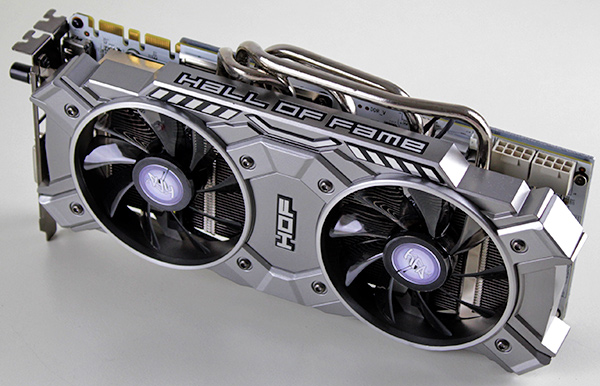
The cooler uses four 6mm thick, copper heatpipes that protrude out of the shroud. The PCB is white, but since the back of the card is covered by a big backplate, there's not a lot of PCB acreage to see.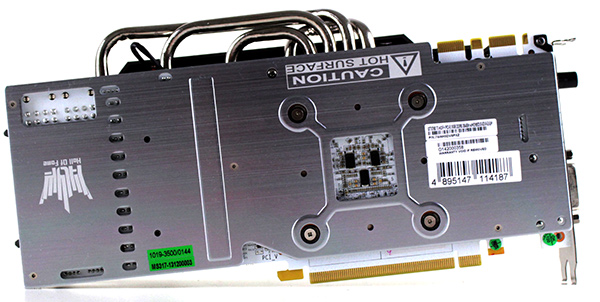
The card features two SLI connectors so it can be used in multi-GPU configurations, be it in standard two-card SLI, or 3-way and 4-way SLI. Of course, you need a lot of room for several triple-slot cards. 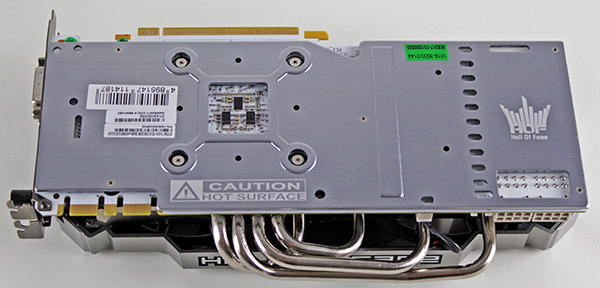
The GTX 780 Ti HOF features an oversized shroud and cooler, so the entire assembly is about 0.8cm longer than the reference card.
The I/O panel of the GTX 780 Ti HOF card contains four video connectors and three of them can be used at the same time. There is one standard HDMI connector (1.4a compatible), one standard DisplayPort out and two DVI outs (one single-link and one double-link).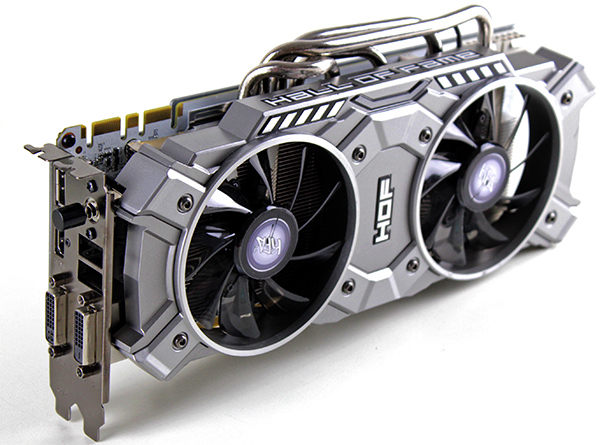
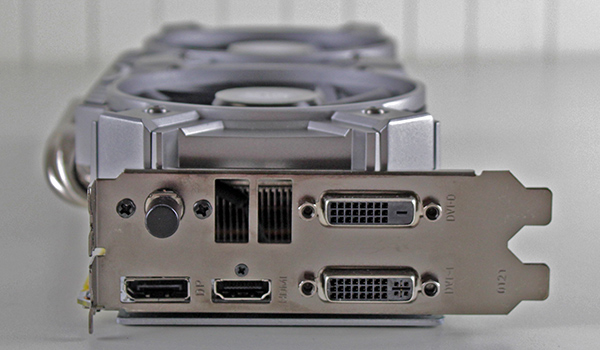
The black button next to the video connectors is the Hyper Boost button - push it to spin the fans up to maximum. Hyper Boost allows you to drop the temperature in no time, with a short burst of high-speed airflow, with the accompanying noise of two 90mm fans maxed out.
Once we took off the cooler we could finally get a good look at the white PCB. White boards are relatively rare, since white PCBs cost more to produce.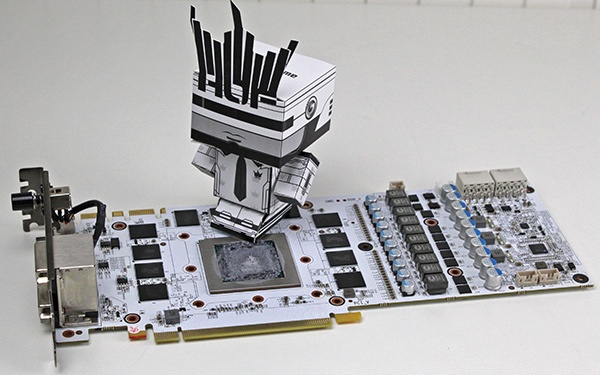
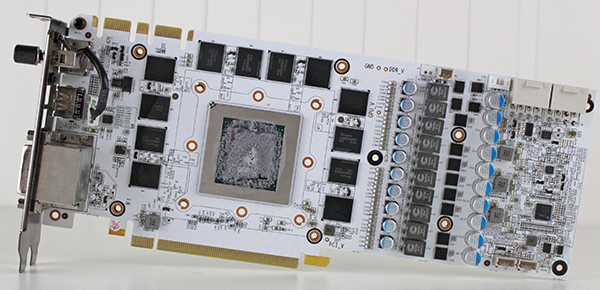
The card has 3GB of GDDR5 memory and all the memory modules at the front of the PCB. The SK Hynix chips, (model H5GQ2H24AFR-R2C) are specified to run at 1750 MHz (7000 MHz GDDR5 effective). 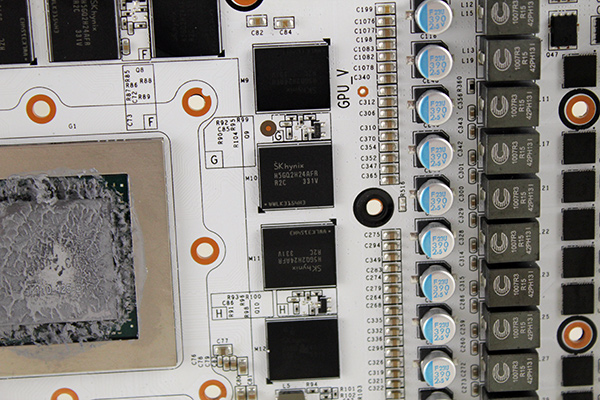
The back of the card is covered by a big backplate.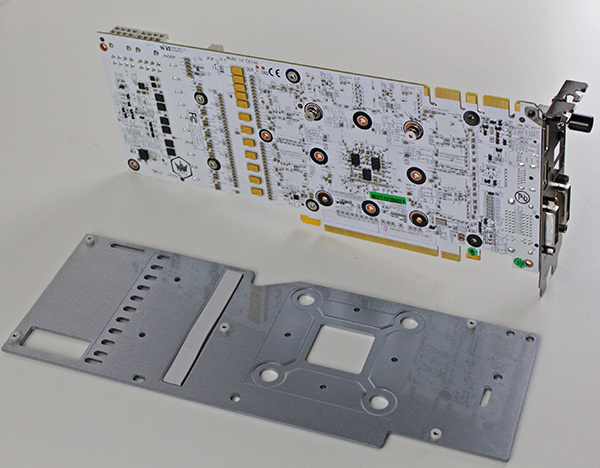
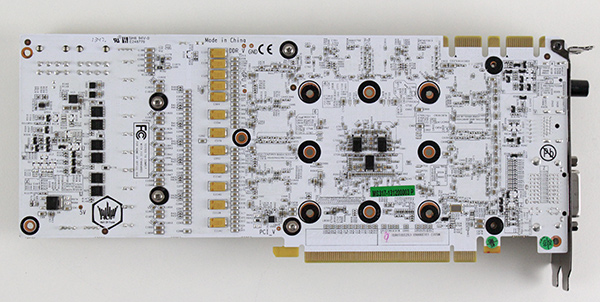
The next picture shows the memory heatsink and the VRM heatsink.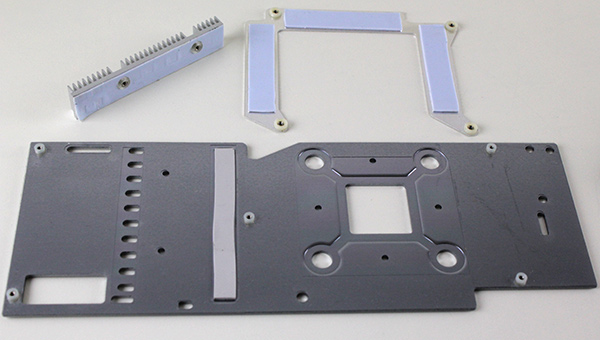
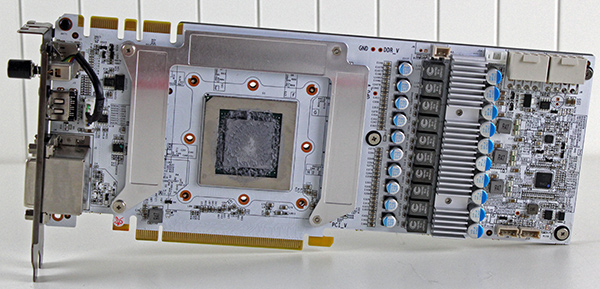
The power circuit is designed as 10+3 phase. The card uses an CHIL CHL8318 voltage controller.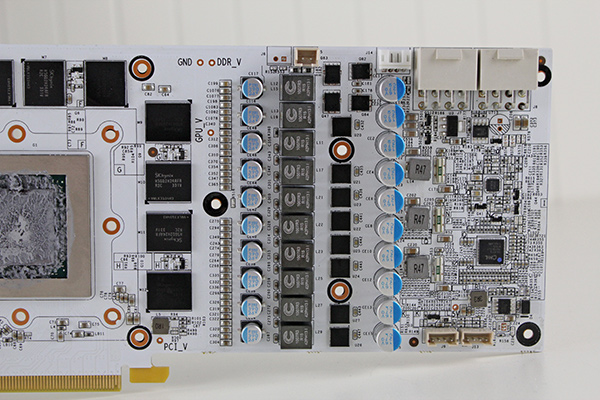
The big copper base (vapor chamber) has a lot to do with the cooler's excellent performance. A big chunk of the heatsink is straight over the base, while the rest of the fin array gets much of its heat through copper heatpipes.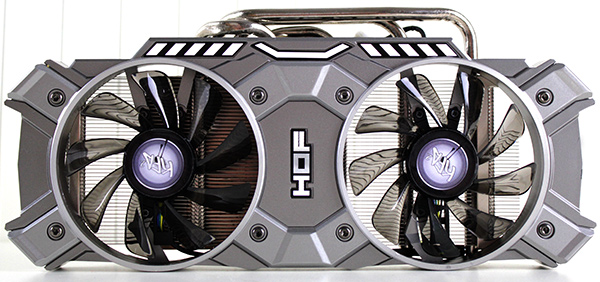
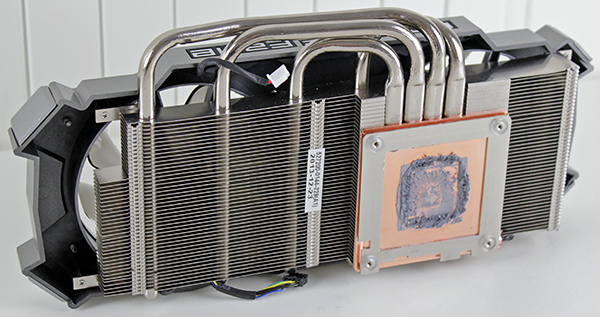
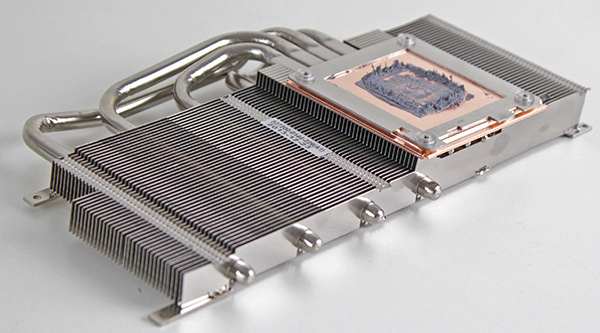
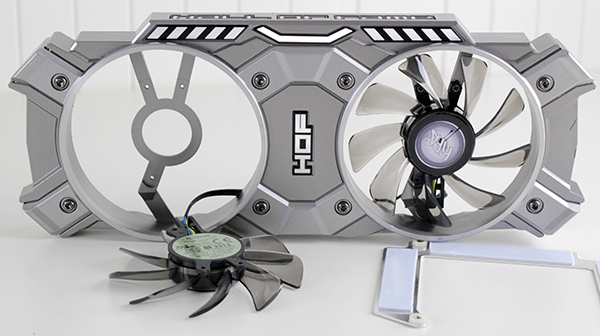
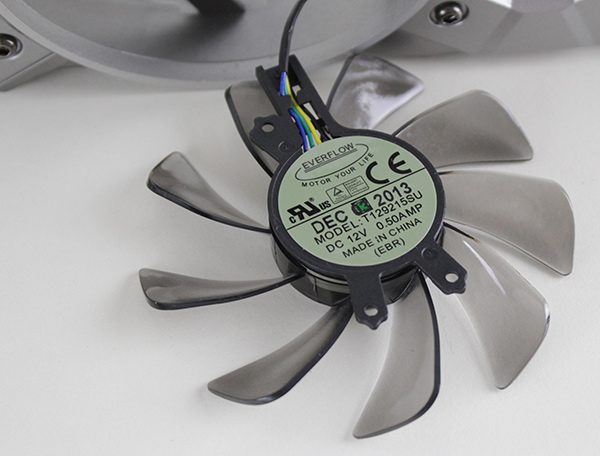
The next pictures shows how cable routing was implemented. Both fans share the same 4-pin power connector. Setting the RPM manually is easy using any popular GPU utility.
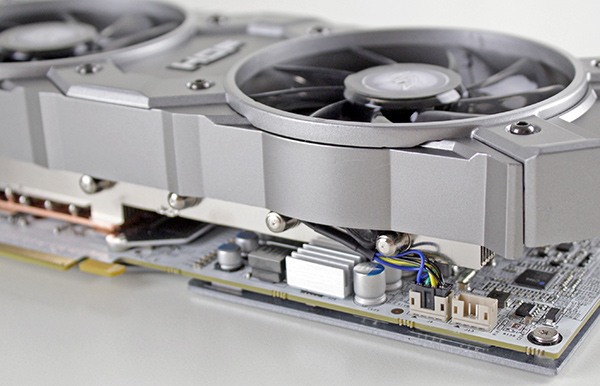
The dual-pin connector next to the 8-pin power connectors powers the LED on top of the card, right under the Hall of Fame logo.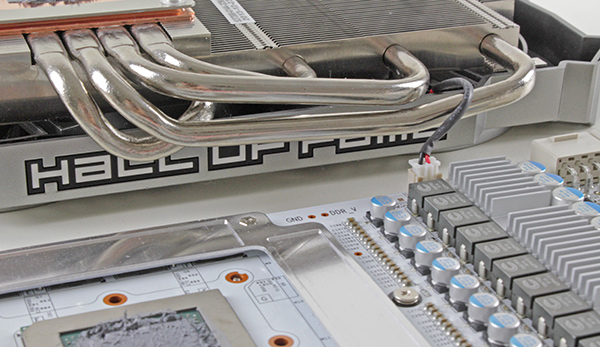
The Hyper Boost button has its own connector.
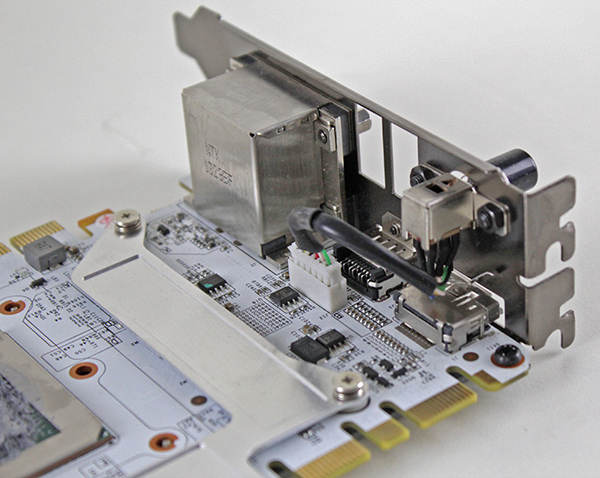
Testbed:
- Motherboard: Intel DZ87KLT-75K
- CPU: Intel Core i7 4770K, 4x3.5GHz (Haswell)
- CPU Cooler: EVGA
- Memory: 2x4GB Corsair DDR3 2400MHz
- Harddisk: Corsair Neutron GTX 240GB
- Case: CoolerMaster Cosmos II
- Operating System: Win8.1 64-bit
Drivers:
- Nvidia GeForce 335.23 WHQL drivers
- AMD Catalyst 14.2 V1.3 Beta for Windows
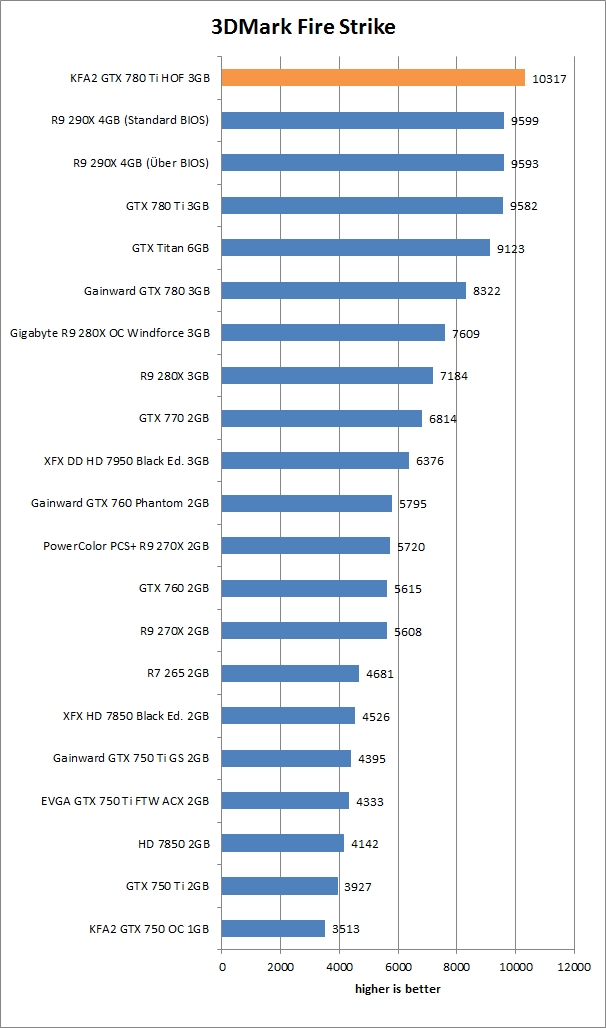
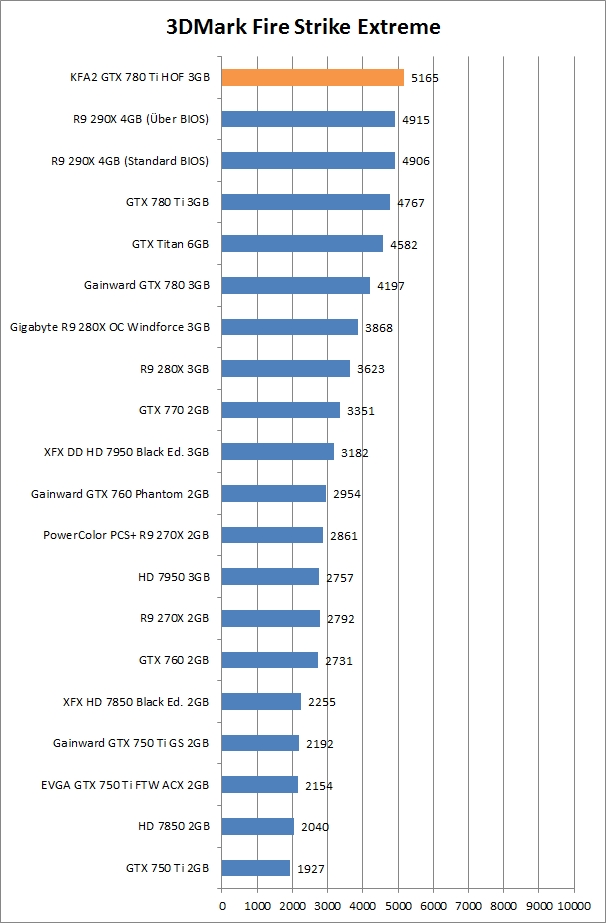
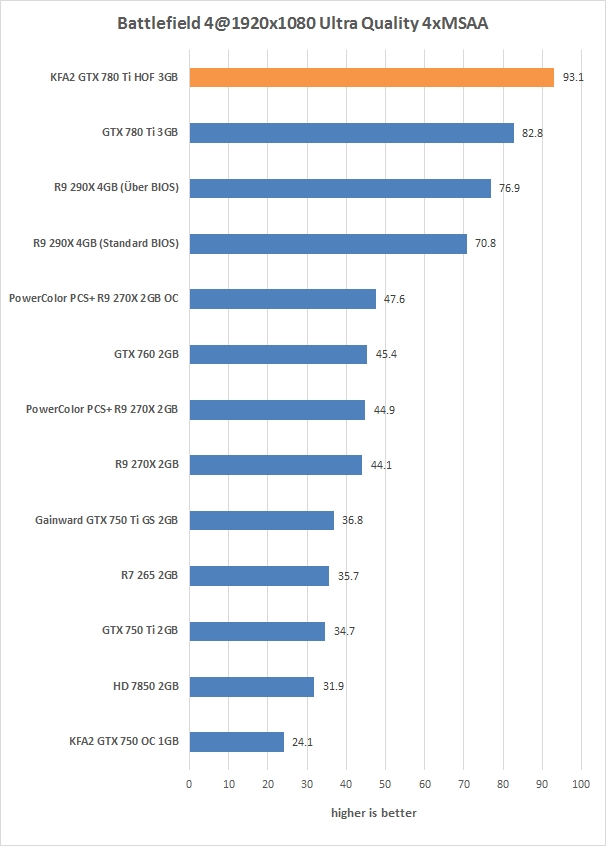
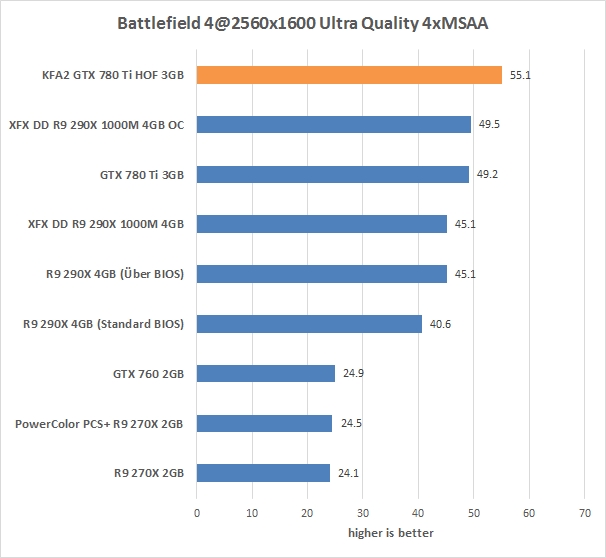
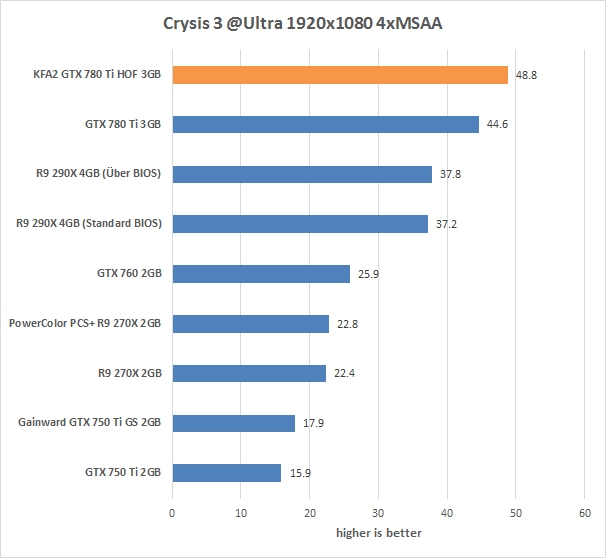
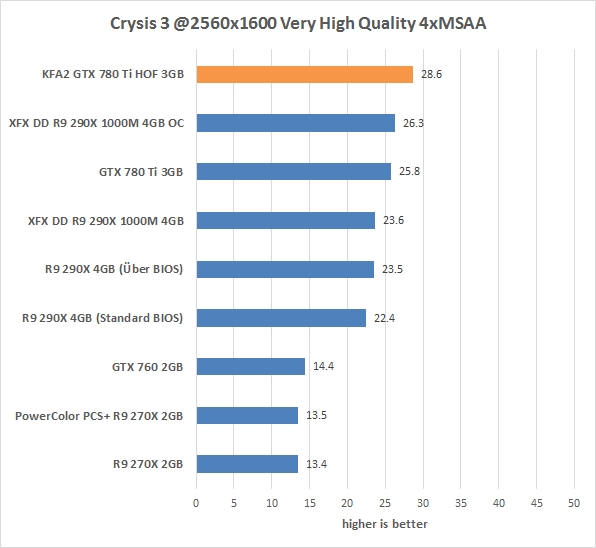
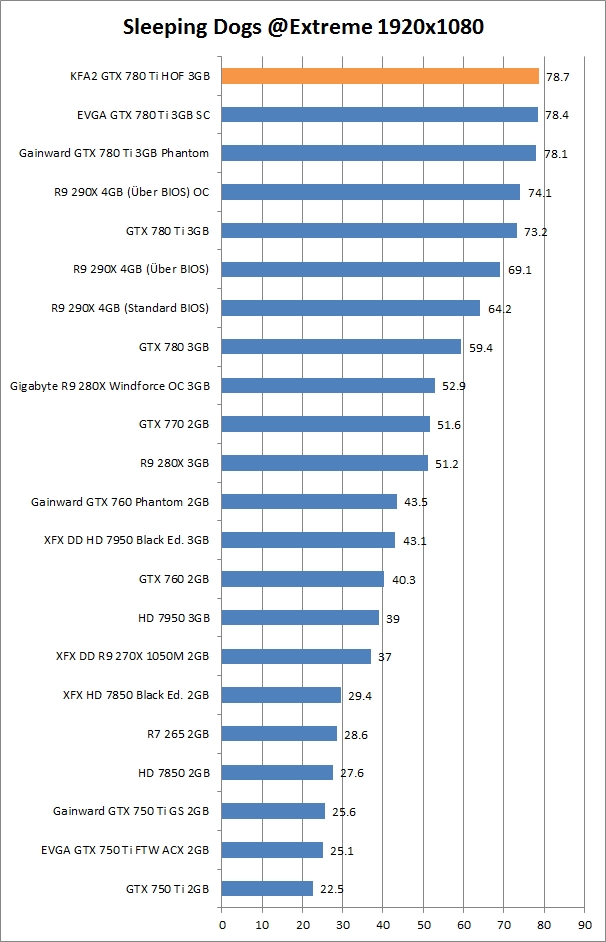
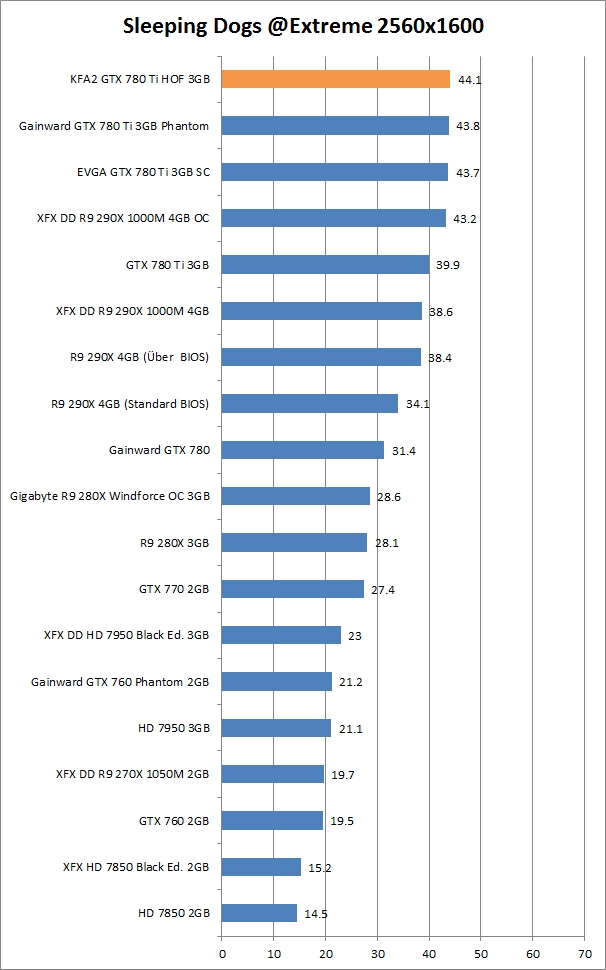
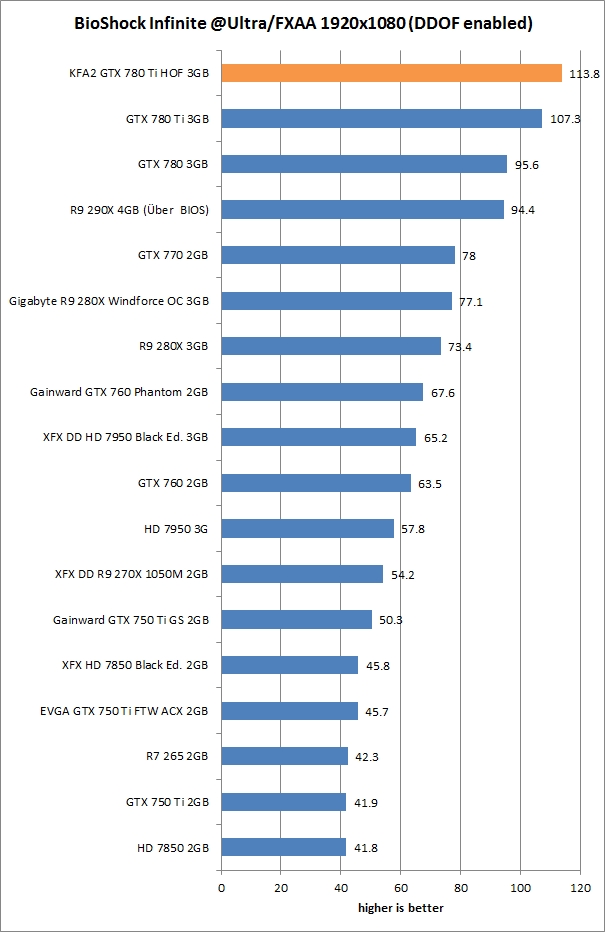
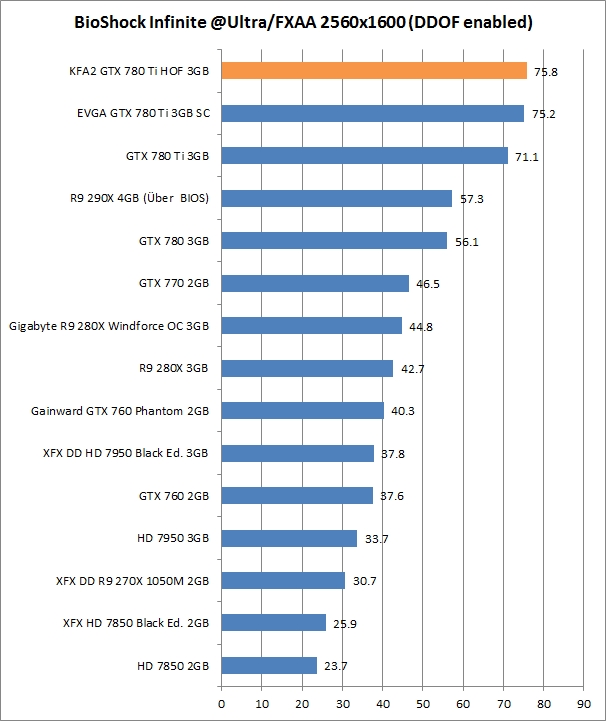
So, in order to keep noise in check while cooling the GTX 780 Ti with a 145MHz factory overclock KFA2 developed an exceptional triple-slot cooler. Let’s see how it performs in the real world.
It is perfectly understandable that the GTX 780 Ti HOF heats up a bit more than the reference GTX 780 Ti, but the good news is that the noise level is roughly the same, even better, despite a high factory overclock. The GTX 780 Ti HOF cooler is relatively quiet in 3D mode and noise is simply not an issue. While idling the card is practically silent. In idle we measured 28 to 30 degrees Celsius.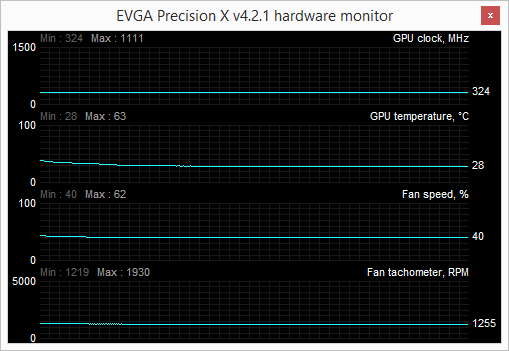
The fan management is excellent and the two 90mm fans won’t surprise you with sudden RPM changes. The maximum GPU temperature is allowed to reach up to 95 degrees Celsius and the thermal threshold is set by Nvidia at 82 degrees Celsius, but you do not have to worry with the GTX 780 Ti HOF. Under load the GPU temperature can hit 73 degrees Celsius in some applications, but we usually measured somewhat lower temperatures.
Note that we tested the GTX 780 Ti HOF card inside the Cosmos II Ultra Tower with a lot of airflow. The HOF cooler, like any other high-performance cooler, loses its edge in a low airflow environment. To see how well it copes in a compact chassis, we tried using it in an EVGA Hadron Air chassis. The miniature chassis was not a good fit for the HOF, as the temperature climbed to 82 degrees Celsius. However, in the big Cosmos II chassis the cooler got a chance to shine and deliver excellent performance.
The following graphs show how well the cooler performs compared to the reference unit. The first graph shows HOF results at 1020MHz, with Boost clocks going up to 1111MHz. The card heats up to 71 degrees.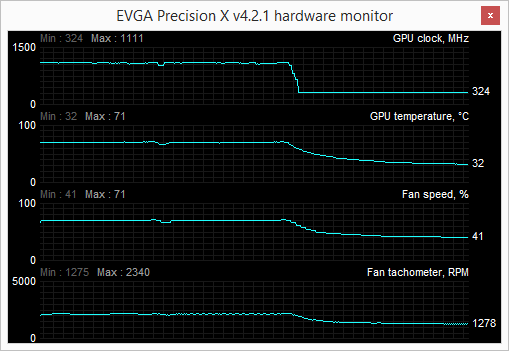
KFA2 GTX 780 Ti HOF
Now let's take a look at the reference GTX 780 Ti. The GPU heats up to 75 degrees at 875MHz base and 1020MHz Boost clocks. The noise levels are about the same, but keep in mind that the HOF operates on much higher clocks.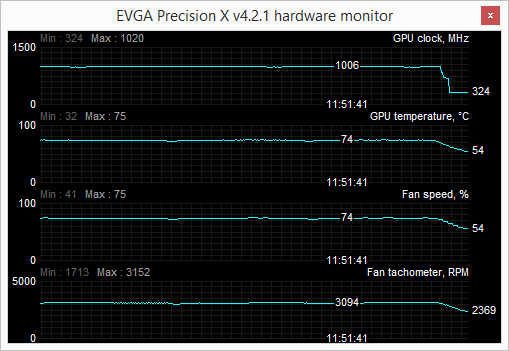
Nvidia GTX 780 Ti reference clock
We tried a different test to check out the reference cooler. We sped up the fan to maximum RPM and increased the GPU clock to 1020MHz. The Boost clock hit 1165MHz, but it did not stay there for long. Although there reference card's peak clock was somewhat higher, its average Boost clock stood at 1110MHz, on par with the HOF.
The reference cooler was operating at 4200RPM and generating quite a bit of noise. The GPU temperature was reduced to 67 degrees, as shown in the following graph. We got roughly the same temperatures on the HOF (with the fans at maximum RPM), but when its cooler is maxed out, it is significantly quieter than the reference Nvidia cooler.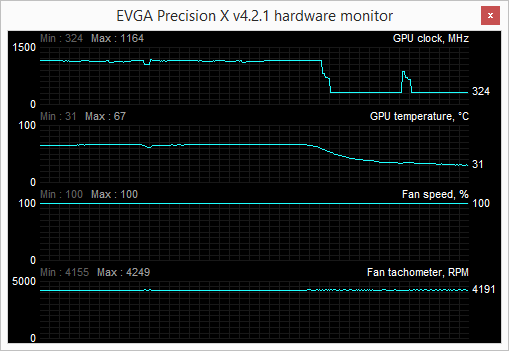
Nvidia GTX 780 Ti overclocked (base GPU clock at 1020MHz, fan at MAX RPM)
Using HOF's Hyper Boost mode delivered a steady 1111MHz Boost clock. The next graph shows HOF numbers when its fans are running at max RPM. PrecisionX did not display the exact RPM, as it works in percentage points. However when the fan speed is set to maximum via PrecisionX, it is about the same as the Hyper Boost speed.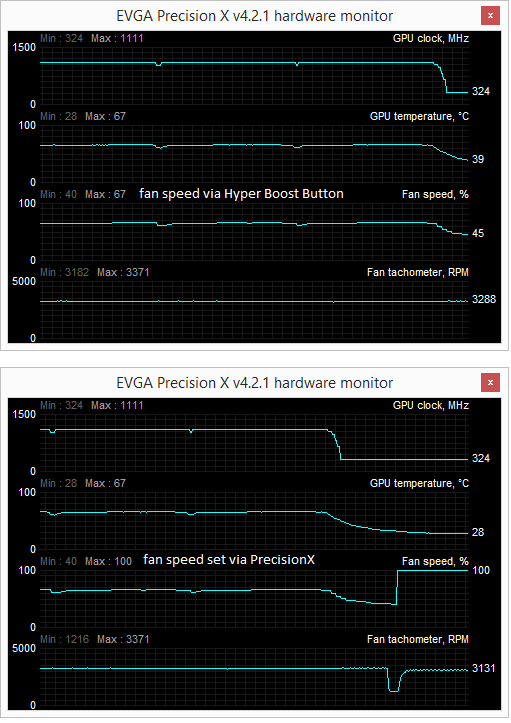
When using HOF's Hyper Boost, the PrecisionX did not display the exact RPM in percentage points
The GTX 780 has a TDP of 250W and thus it needs both a 6-pin and 8-pin power connector to keep the lights on, so to speak. Nvidia recommends a 600W PSUs of good quality. KFA2 blessed the HOF with two 8-pin power connectors and 10+3-phase power system to improve stability and overclocking performance.
In terms of power efficiency, we can report that the GTX 780 HOF can draw slightly more juice (10 to 20W) than the reference GTX 780 Ti. This is quite normal for a factory overclocked card.

Using standard voltage and AUTO fan settings we managed to push the GPU 110MHz over the factory clocks. Note that the KFA2 GTX 780 Ti HOF works at a 1020MHz base clock, while the reference GPU base clock is set at 876MHz. Adding a couple of mV we pushed the base GPU to 1150MHz. The overclocking potential is very good for a factory overclocked card. You can use XtremeTuner+ for overclocking and monitoring. Memory overclocking is vital in any attempt to squeeze out more performance from a graphics card, so we are happy to report that memory also produced good results with a total 200MHz (effective 800MHz) overclock. Hyper Boost button actually only boosts fan speed and it can help you to achieve higher boost clocks, once you pushed the base GPU clock, what is again equivalent to overclocking.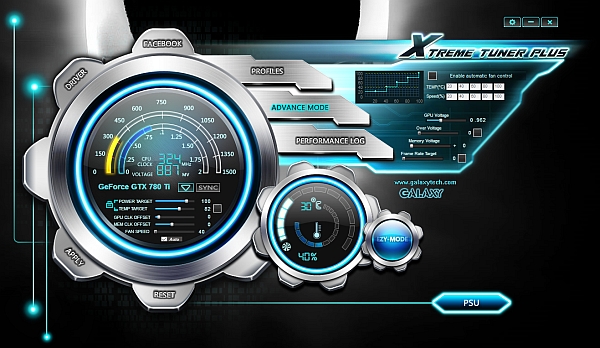
KFA2 did a really great job with the GTX 780 Ti Hall Of Fame graphics card.
The 145MHz factory overclock translates into a performance gain of about 10 percent. KFA2's custom cooler does a good job at keeping the overclocked card cool and quiet. It does not get too loud even when pushed to its limits. The only downside is that a triple-slot cooler is not a good choice for three-way and four-way SLI setups.
The white PCB sandwiched between the silver shroud, chromed heatpipes and a silver backplate looks quite good - sadly you don't get to see much of it. It's a matter of taste, but we have to admit we like the overall look. There's too many black cards out there and it's nice to see something different from time to time.
We should also point out that you could see the GTX 780 Ti HOF card under a different brand, i.e. Galaxy, as KFA2 is Galaxy's brand for the EMEA region.
We won't waste much time on performance. By now everybody knows that the GTX 780 Ti is capable of. It can run all currently available games at 2560x1600. The overall performance of the overclocked HOF card is exceptional. The card delivers a 10 percent performance boost over the reference card and it still has some overclocking headroom.
Previous generations of Geforce reference designs featured relatively noisy coolers, but this is no longer the case. Making the case for custom cards is not as easy as it once was. However, when overclocked, the reference GTX 780 Ti can be loud, much louder than the HOF at the same clocks.
The card has more than enough power to deal with today's games and it probably won’t have much trouble keeping up with new games expected to show up over the next couple of years.
The HOF card is listed at €609 in European retail, which is about €50 more than the cheapest GTX 780 Ti. It is no small premium, but the HOF is truly a premium product. It features an excellent cooler, high factory overclock, top notch power components and a white PCB for fashionistas.
